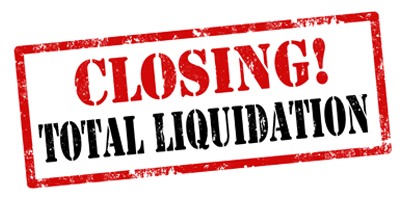The 7-Second Trick For Company Liquidation
Wiki Article
The Of Company Liquidation
Table of ContentsSome Known Details About Company Liquidation Company Liquidation - An OverviewIndicators on Company Liquidation You Need To KnowThe Basic Principles Of Company Liquidation Company Liquidation Fundamentals Explained
A liquidator is especially selected to supervise the winding up of a company's events in order for it to be shut down generally when the company is going insolvent. The liquidator is an unbiased third party who oversees the sale of company properties in order to pay off any type of arrearages.Their duty includes, however is not restricted to: Unbiased Movie director: A liquidator is tasked with serving as an unbiased 3rd party to look after the whole company liquidation process. Create Declaration of Matters: Liquidators should develop an extensive statement of events document. This paper is distributed to financial institutions, describing the current financial condition of business at the time of its liquidation.
After the liquidation of a business, its existence is gotten rid of from Companies Home and it stops to be a legal entity. If supervisors navigated the procedure without problem, there would certainly be no charges or individual responsibility for firm financial obligations anticipated. Now, with a fresh start, supervisors can discover new organization possibilities, though expert assessment is recommended.
Top Guidelines Of Company Liquidation
If more than 90% of all business investors concur, liquidation can take area on short notice within seven days, the minimum statutory notice for lenders. Generally, the bigger the liquidation and the even more possessions and capital the service has, the longer the process will certainly take.
We recognize that no two firms are the very same, which is why we will certainly make the effort to learn more about your business so we can advise the most effective strategy for you. We just operate in your benefits, so you can be totally certain in the solution we offer.
The Main Principles Of Company Liquidation
In the UK, there is a set procedure to closing down or restructuring a restricted firm, whether it is solvent or bankrupt. This procedure is known as liquidation and can just be dealt with by a certified bankruptcy specialist (IP) based on the Insolvency Act 1986. There are 4 major types of firm liquidation process: Lenders' Voluntary Liquidation (CVL); Compulsory liquidation; Administration; and Members' Voluntary Liquidation (MVL).
In these conditions, it is essential that the business stops trading; if the organization continues to trade, the supervisors could be held personally liable and it can lead to the bankruptcy practitioner reporting wrongful trading, referred to as misfeasance, which might bring about lawful activity. The supervisors designate an insolvency professional and as soon as this has been concurred and verified, there is a meeting with the investors.
The supervisors are no longer involved in what takes place, including the sale of the company's possessions. If the directors want any of the properties, they can notify the IP.
The smart Trick of Company Liquidation That Nobody is Discussing
The primary difference is that the firm's lenders see post used to the court for an ending up order which forces the financially troubled firm into a liquidation process. Financial institutions take this action as a last resort since they have not obtained payment with various other types of negotiation. The court designates an insolvency professional, likewise known as an official receiver, to carry out the compulsory company liquidation procedure.This kind of business liquidation is not volunteer and directors' conduct is reported to the UK's Assistant of State once the liquidation procedure has been completed. Therefore, any director that falls short to coordinate with the IP or has actually been involved in director transgression, or a fraudulent act, may result in severe consequences (Company Liquidation).
It is made use of as a method to secure the company from any lawsuit by its lenders. The supervisors of the business agree to make normal repayments to settle their financial obligations over a time period. The designated manager takes care of the volunteer management process, and receives the settlements which they after that disperse to financial institutions according to the agreed quantities.
Some Ideas on Company Liquidation You Need To Know
This provides the firm with time to develop a strategy moving forward to rescue the business and stay clear of liquidation. Nonetheless, at this moment, directors hand control of the business over to the appointed administrator. If a directory business is solvent but the supervisors and shareholders want to close business, a Members Volunteer Liquidation is the right option.The company liquidation process is managed by a liquidator appointed by the supervisors and investors of the company and they have to sign an affirmation that there are no financial institutions remaining. The liquidation process for an MVL resembles that of a CVL in that possessions are realised however the earnings are dispersed to the supervisors and the shareholders of the business after the liquidator's costs have been paid.
Report this wiki page